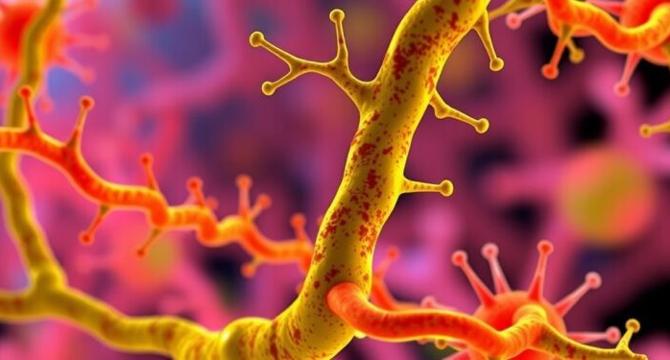Bioengineer
1w
212

Image Credit: Bioengineer
Fructose Sparks Tumor Growth Through a Surprising Path
- New research has shed light on the impact of fructose on tumor growth and how it is mainly due to lipid molecules released by the body’s fructolytic tissues particularly the liver that help cancer cells thrive. Scientists have found that fructose enhances tumor growth by prompting lipid molecules such as lysophosphatidylcholines (LPCs) to be released in the bloodstream after fructose is ingested, which can be utilized by cancer cells to grow. The interplay between diet, organ metabolism and tumor biology is complex, and fructose plays a more systemic role in benefiting growing tumors. The study makes a case for more refined metabolic strategies in oncology targeting liver metabolism as compared to limiting glucose or blocking glycolysis, which standard dietary interventions often use.
- Researchers started by carefully examining how dietary fructose consumption might drive malignant proliferation, using zebrafish, mice and cultured cells. They found that the direct use of fructose carbons by malignant cells was minimal. When in co-culture experiments, cancer cells were exposed to fructose, it resulted in robust proliferation but only when combined with hepatocytes that have KHK-C-rich tissues and the ability to break down fructose into byproducts that can be channeled to various metabolic routes such as lipid generation.
- Experiments have revealed that fructose-treated hepatocytes produce LPC molecules that rise due to the presence of fructose in them. This spike is significant enough to supply malignant cells with an abundant source of lipids that are vital for membrane biosynthesis. Fructose does not necessarily require weight gain or insulin resistance to drive tumor growth, and fructose-aided tumor growth is not via direct fructose consumption by malignant cells. Instead, these tumors hijack the end products of metabolic transformations happening in the liver.
- Fructose’s link to tumor promotion highlights that metabolic crosstalk among tissues is of paramount importance. The liver emerges as a gateway that decides how fructose is handled, generating a range of lipids that malignant cells can seize. While the lack of direct fructose metabolism in malignant cells means simply blocking known fructose transporters might not help, targeting KHK-C in the liver or other steps involved in LPCs generation could be more relevant to preventing fructose-aided tumor growth.
- Given the widespread prevalence of HFCS in commercial foods, these findings highlight a critical public health concern. The study also points to intriguing possibilities for patient interventions. Blocking KHK-C might represent a novel route to hamper lipid supply lines, although care is necessary because global inhibition of KHK might have consequences for normal fructose handling. The present data offer the possibility of future therapeutics targeting the hepatocyte-lipid link with potential to curb tumor progression in mice.
- The study also highlights the complex interplay between sugar intake, organ metabolism, and systemic lipid distributions. While limited to experiments on mice, the present study provides a robust demonstration that fructose fosters malignant proliferation mostly through intermediates generated by the liver. This expanded standard notion of direct glucose uptake emphasizes fats like LPCs which are taken up by malignant cells that have abundant supply once the liver processes fructose.
- Although further work is necessary to flesh out the full scope of how dietary fructose interacts with different tumor microenvironments and how various individuals might differ in their liver’s response, this study supports the conclusion that high-fructose diets can bolster tumor growth by fueling a surge in circulating lipids that malignant cells eagerly consume. The findings compel researchers, clinicians, and patients to rethink fructose beyond its direct roles in obesity or glycemic control to shape more nuanced approaches to controlling cancer’s path.
Read Full Article
12 Likes
For uninterrupted reading, download the app